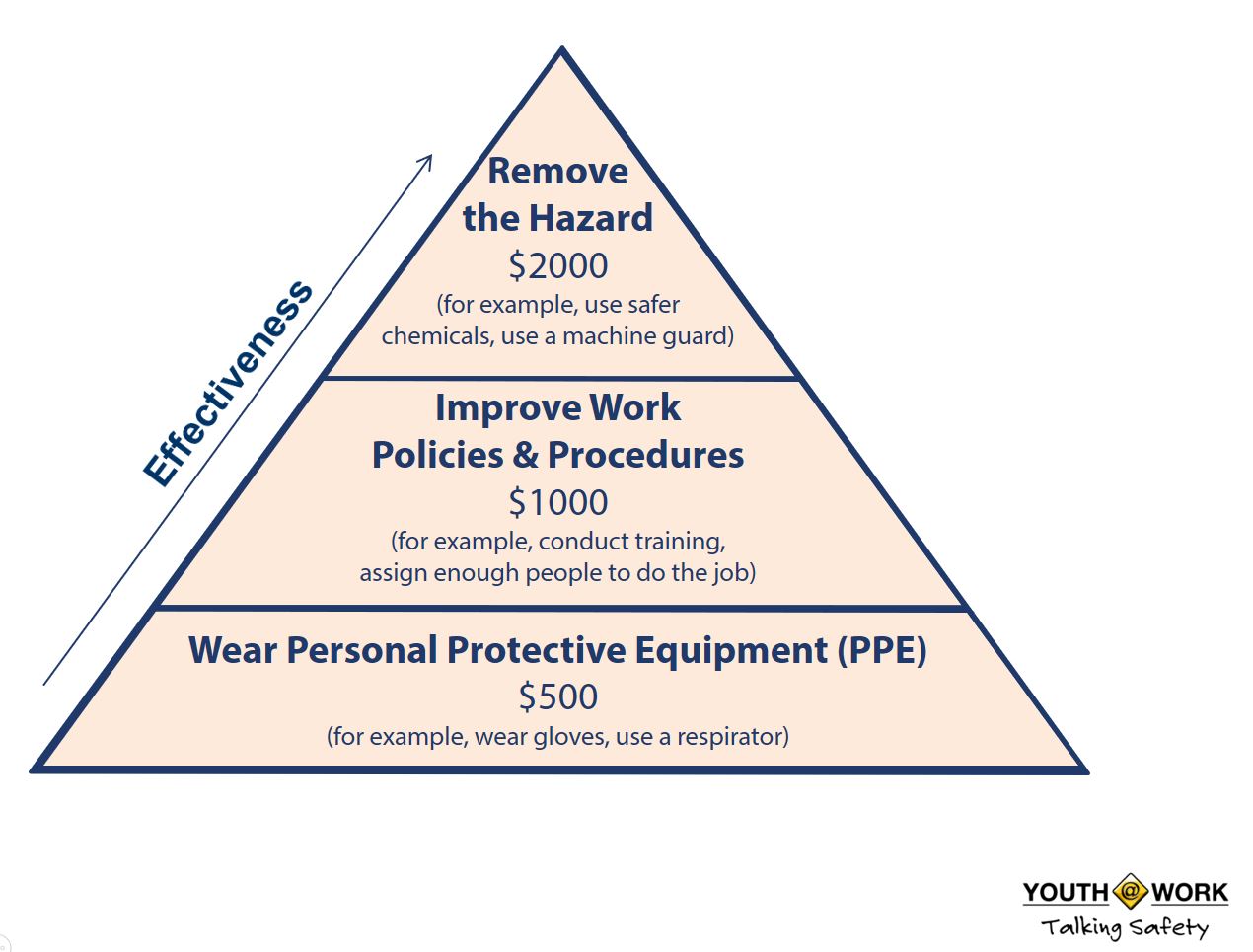Learn
Preventing Injury
Your employer probably has procedures or rules in place or in a employee handbook about staying safe on the job. Obviously, you should know or follow those rules when something unsafe happens or could happen while you are working.
Here are some common workplace safety rules that you might find in an employee handbook or be required to learn during training:
- When lifting anything heavy,
- wear a back belt;
- bend your knees/do not bend at the waist;
- ask for help.
- You must wear proper protective equipment to avoid injury. Steel-toed shoes are a must for anyone working with heavy materials.
- If you have long hair (below the level of your chin), you must wear a hat, scarf or hairnet.
- When handling blood or bodily fluids, you must wear latex gloves. If you are allergic to latex, where nitrile gloves.
- If you cannot reach an item, obtain a ladder or stepladder for use. Make sure the ladder is on solid ground and is fully extended and secure before climbing.
- Rubber, non-slip sole, closed toe and heel shoes must be worn at all times in the restaurant.
- Notify a manager of any injuries to you, a customer, or co-worker. If you are injured on-the-job, you must complete an accident report.
Even if there aren’t rules in place, you should be able to help prevent injuries on the job.
One of the most common hazards on any job are liquid spills that make a floor slippery. This can injure you, another worker, or sometimes, even a customer.
Examples of Teen Work Injuries

In the picture above, imagine why this happened, what could have prevented the person from being hurt, and how could it affect his daily life?
Facts:
- One of the reasons people get hurt at work is because there are hazards on the job
- A hazard at work is anything that can hurt you either physically or mentally
- Every nine minutes young workers are injured on the job, more frequently than you would think.
Here’s the story:
Jack worked in the kitchen of a fast-food restaurant in the evenings after school and on weekends. One Friday afternoon Jack had to work the fryer. At one point, Jack walked across the floor carrying a basket of french fries. He didn't see a slick spot on the tile, and he slipped and fell. He landed on his tailbone and was seriously hurt. Now Jack has pain that won't go away, and he has trouble walking and sitting.
Why
Why did this happen?
- Someone spilled grease or water earlier and didn’t clean it up.
- Jack wasn’t paying attention.
- Jack did not have on the correct shoes for working in the kitchen.
- Everyone was in too big a hurry at work and became careless.
What
What could have prevented Jack from being injured?
- a mat – a safer floor
- cleaning the floor
- some safer shoes
- a grease guard
How
How might this affect Jack’s daily life?
- He might miss a lot of school.
- He might not be able to concentrate at school or at work because he is hurting.
- He might not be able to work if the work involves standing or sitting for long periods of time.
- His free time will be impacted because he might not be able to do the fun things he used to do.
The bad news:
- All people are at risk for being hurt on the job.
- All jobs have hazards.
- As teens, you're twice as likely to be injured at work.
- Some of these injuries can change your life forever.
The good news:
- Workplace injuries are predictable and preventable.
Controlling Hazards

Since the most effective way to control a hazard is to remove it, you must first be able to identify the hazard and then take safe steps to remove it.
Two jobs that teens often hold are working in a restaurant or working in a grocery store. Here are the most common hazards for each:
- Most common restaurant hazards: Slips, trips and falls; hazardous materials; cuts; burns
- Most common grocery store hazards: Use of equipment and machinery; slippery floors; heavy lifting
You have worked or been in a restaurant or grocery store. Think about the following questions.
- Have you seen any of these hazards?
- How can each of these be removed?